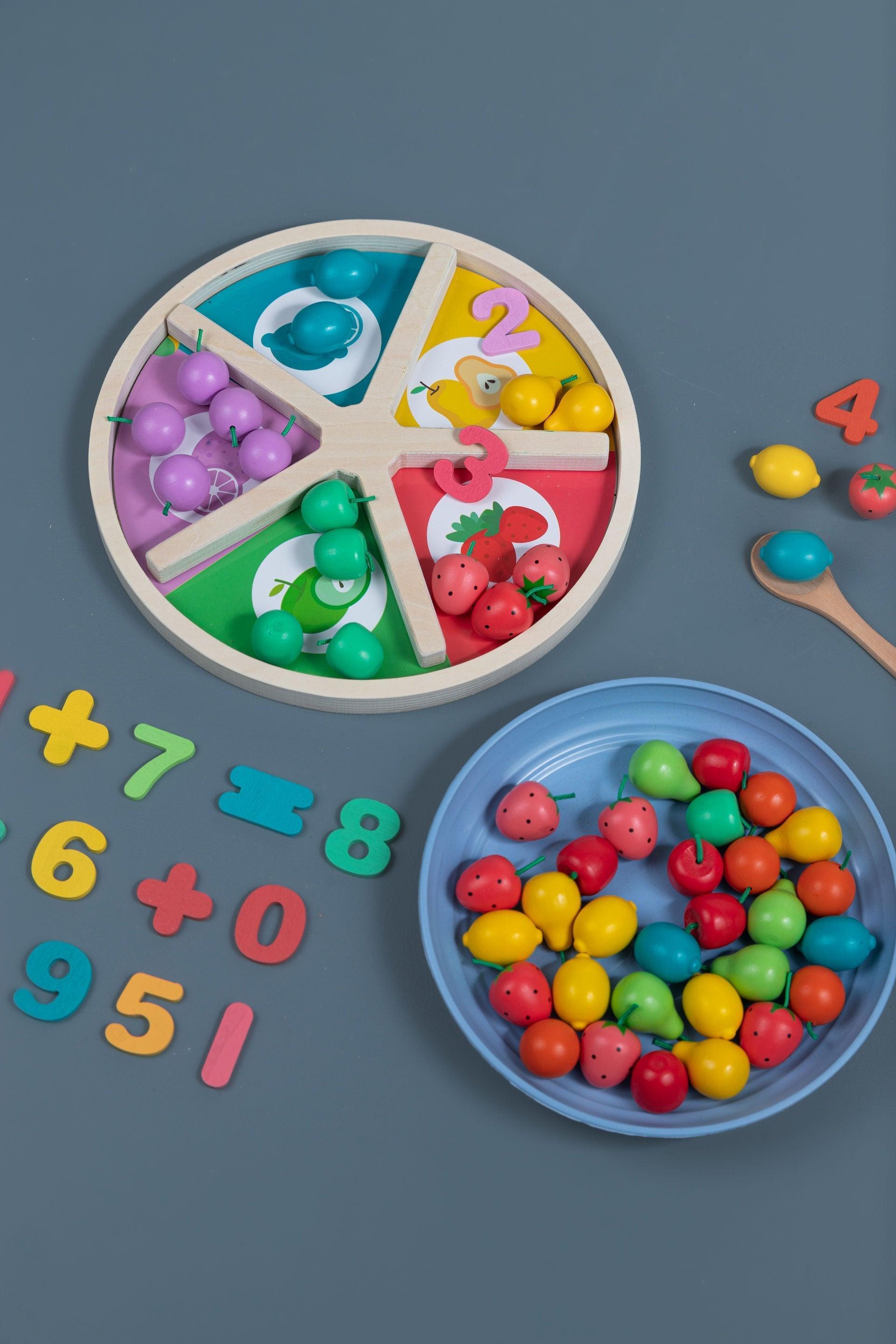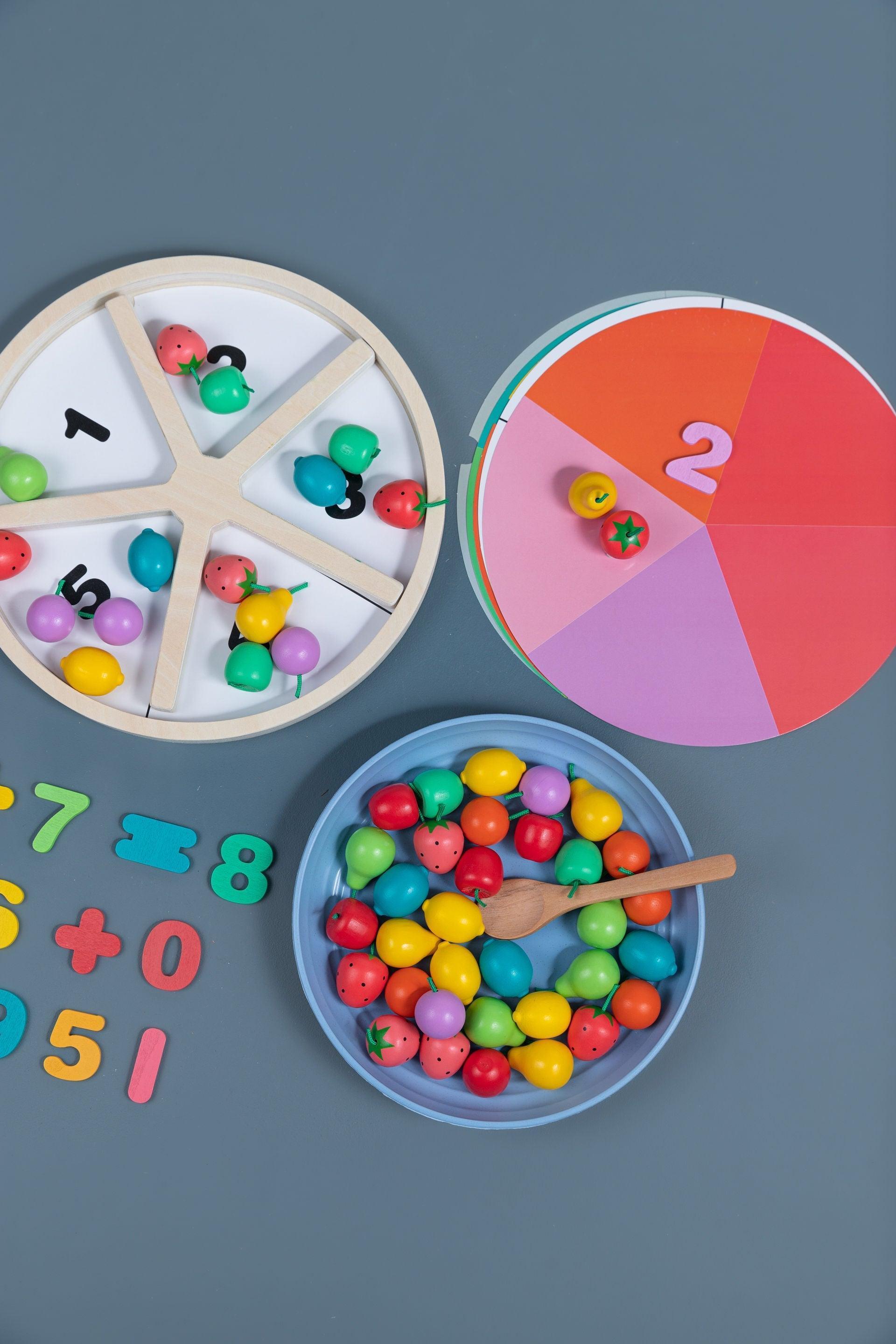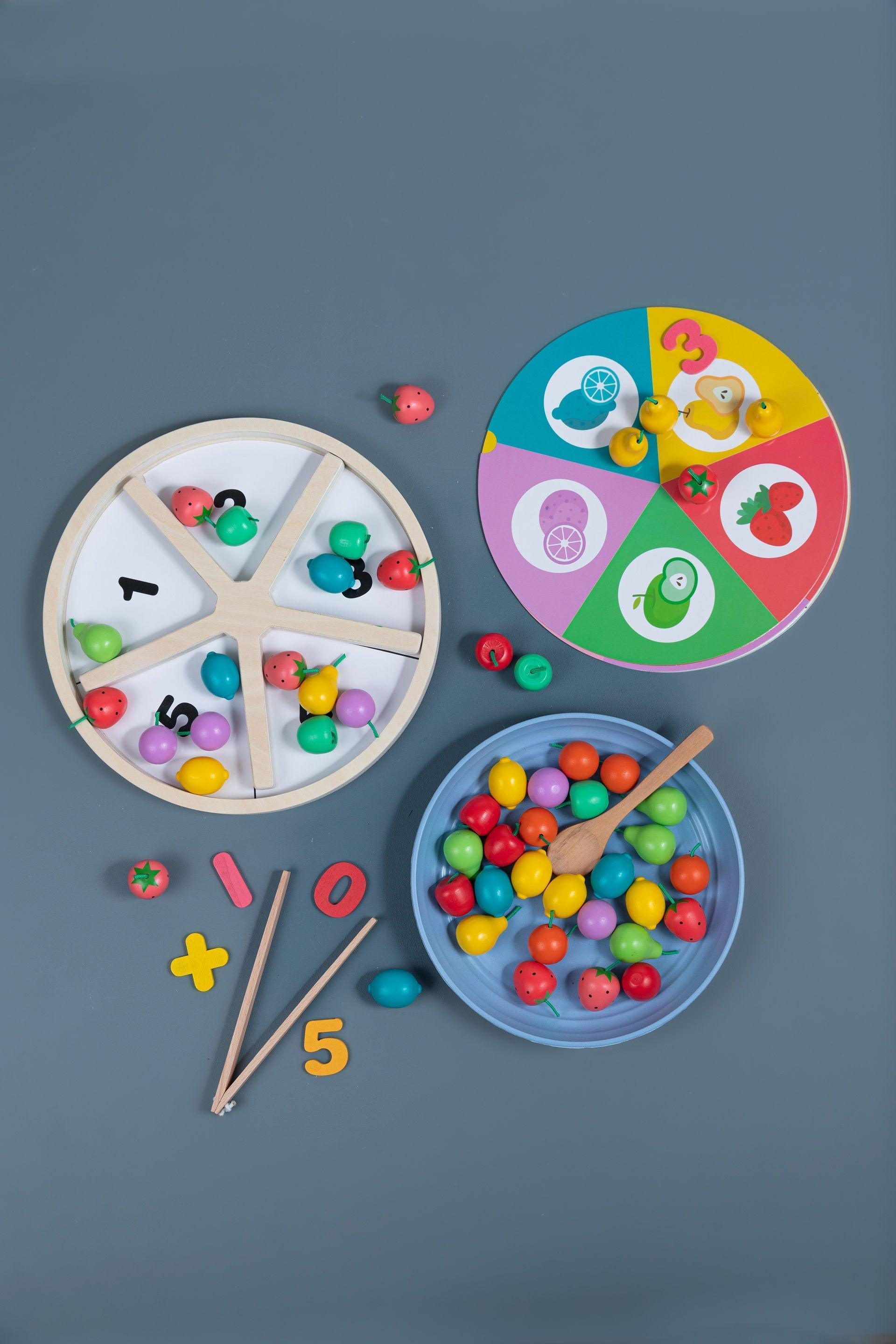Wooden Fruit Sorting Set
This innovative set features brightly coloured wooden fruit pieces, sorting trays with dividers, and a variety of fine motor tools, offering endless learning opportunities. Ideal for teaching foundational math skills, enhancing fine motor development, and fostering creative play, this set is a favourite among both children and therapists. Let's explore why this versatile game is an excellent addition to any child's educational toolkit.
What's included:
- 1 x wooden sorting bowl with divider
- 1 x tweezer
- 1 wooden spoon
- 7 x sorting activity cards
- 1 set of wooden numbers 0-9 with -x = signs
- 50 fruit pieces (10 designs)
What our OT says:
As an occupational therapist, I’m always on the lookout for engaging and educational tools that support various stages of child development. One of my favourites is the Wooden Fruit Sorting set, which offers a multitude of learning opportunities for young children. This set includes brightly coloured fruit pieces in a wooden sorting tray with different dividers, sorting cards, wooden numbers 0-9, a bowl, a storage bag, wooden tweezers, and a spoon. It’s a comprehensive kit that makes learning fun and interactive, often without children even realising they are learning.
- Fine Motor Development: The set includes a variety of fine motor tools like tweezers and a spoon, which are excellent for developing fine motor skills. However, the best tool for picking up the fruit pieces is the pincer grip, which further refines dexterity and coordination.
- Realistic and Engaging Pieces: The wooden fruit pieces are brightly coloured and look amazingly real, making them perfect for both educational activities and imaginary play. This dual functionality helps keep children engaged and encourages creative thinking.
- Foundational Math Skills: As a beginner math set, this kit addresses all the pre-math development areas: sorting, matching, patterns, grouping, and basic calculations. These skills are essential building blocks for more advanced mathematical concepts.
- Versatile Sorting Options: The removable divider allows for different sorting activities. By placing a sorting card in the bottom of the tray and then putting the divider back in, children can sort by colour, fruit type, or number of pieces. This adaptability ensures the tool grows with the child's abilities.
Engaging Activities:
- Pattern Matching: Use the fruit without the sorting plate and create patterns on the table, such as apple, lemon, strawberry, orange. Ask the child to match the shapes and see how many lines they can make before running out of pieces.
- Counting and Holding: Ask the child to cup one or both hands and hold them in that position as you drop fruit pieces one at a time into their palms. Count as you go and see how many they can hold. Repeat the activity, aiming to hold one more piece each time.
- Hand Coordination: Place one piece of fruit at a time in the child’s palm and ask them to push it to their fingertips without dropping it. This activity enhances hand coordination and control.
- Sorting by Attributes: Skip the sorting cards and mix up the fruit pieces. Ask the child to find and place pieces into the sorting tray one at a time, sorting by colour, fruit type, favourite fruit, shape, etc.
- Memory and Sequencing: Give verbal directions for a sequence of fruit pieces to add to a sequence. Ask the child to remember the sequence and add the fruit accordingly. This activity strengthens memory and sequencing skills.
- Colour Reinforcement: Reinforce colours by always naming the colour first when talking about each fruit piece. This constant repetition helps solidify their understanding of colours.
- Memory Challenge: Make a line of two or more pieces of fruit and ask the child to memorise it. Verbally rehearse the pieces in order to aid memorisation, then cover the pieces and ask the child to recreate the line. Gradually increase the number of pieces as the child’s memory improves.
- Real and Pretend Play: Incorporate real fruit into the game and match the real fruit with the wooden pieces. Discuss the characteristics of each fruit, such as colour, taste, seeds, and how they grow. This not only enhances learning but also makes the activity deliciously fun!























